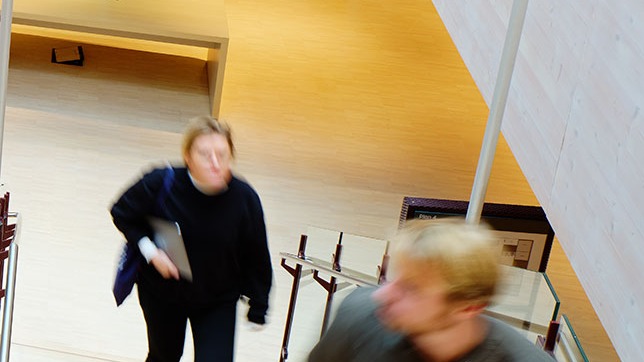The need to meet physically for teaching became clear during the pandemic. Now there is also a growing interest in higher education institutions for questions about how to actually take advantage of the time when you meet. This is shown by a new research report, on the learning environments of the future, initiated by Akademiska Hus.
The report "Learning environments of the future, a research-based overview" has been written by Marie Leijon, senior lecturer at Malmö University and Åse Tieva, senior lecturer at Umeå University. The project was initiated by Akademiska Hus before the pandemic in order to get a more comprehensive picture of the research situation in the area and thus have a greater opportunity to design the learning environments of the future on a scientific basis. One conclusion that the authors draw is that we will see an increased variety and flexibility in the development of learning environments. There is not one type of environment that works for all situations, students have different needs and teachers use different pedagogical methods.
- We simply have to start from what we want the student to learn and design pedagogy and learning environments that provide the best support for it, says Åse Tieva, Umeå University.
The research indicates that it is therefore relevant to involve teachers and students to a greater extent in the development of learning environments. Starting from learning is just as important in the physical as in the virtual or hybrid space, which also needs to be designed based on pedagogy and learning. When the pandemic broke out, the project was expanded and a question was added about what experiences higher education institutions had in connection with the pandemic in relation to learning environments.
- For those of us who are interested in questions about learning environments, it is clear that this has been an interesting period. Suddenly, issues that we have focused on for a long time have ended up high on the agenda, also at the higher education institutions' management level, and I see that as very positive, says Marie Leijon, senior lecturer at Malmö University.
The report has three parts. The latter two focus more on the pandemic's consequences for education and learning environments. A survey is presented where representatives of a selection of Swedish universities have shared their experiences during the pandemic.
The first part of the report provides a survey and a summary of research on learning environments 2009-2021. The overview shows that the research field of learning environments in higher education is growing and that it is characterized by a variety of concepts, which are interpreted differently. Through the report, the authors contribute to the discussion by presenting interpretations of concepts about learning environments in a glossary.
Return to campus - but not as before
The way in which the pandemic will change how learning environments should be designed is of course difficult to give an exact answer to right now. The report refers to researchers who warn that “emergency remote teaching” may become the new normal and that we must take a critical approach to digitalised teaching methods and devote ourselves to quality development. It also describes reasoning about how the pandemic meant a quick and necessary change, but that more active action is now required to design the education we actually want. Something that the report authors agree with.
- University pedagogical development departments have had a lot to do during the pandemic and they will also play an important role in the future when we now return to campus, says Åse Tieva and is supported by Marie Leijon.
- We have heard many state since the pandemic broke out that we should take the good parts into the new. But in what way? How to do it? I'm afraid that too much lands on the individual educator.
